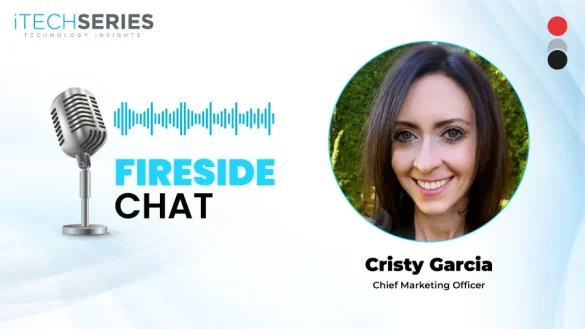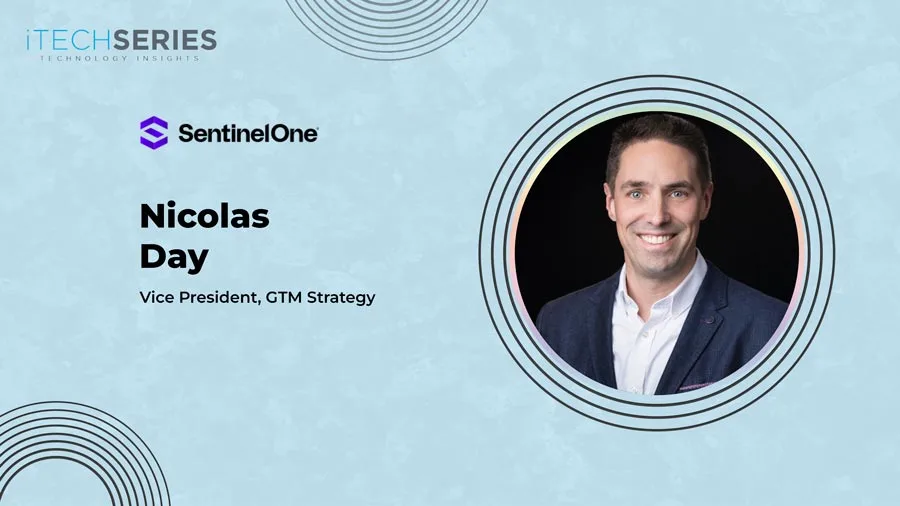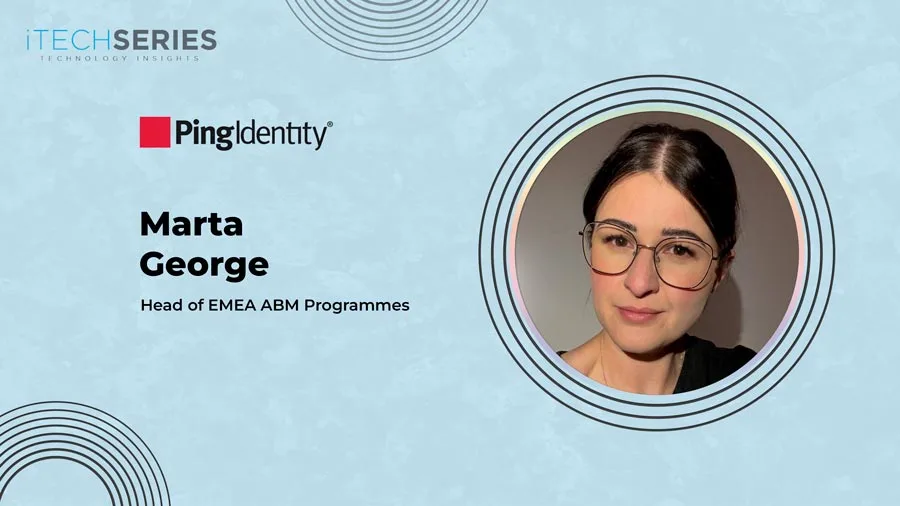Kenny Lee, a Marketing Expert, Consultant and Go-To-Market Leader with 25 years of experience, shares his insights on driving business transformation and aligning marketing with sales and product functions to achieve impactful growth.
Kenny, it’s wonderful having you on this interview series. You’ve had quite an interesting journey to becoming a GTM leader and expert. Tell us more about it.
Thanks for inviting me to be part of the iTech Series Unplugged! Over my 25-year career, I’ve had the incredible opportunity to work with some of the biggest names in tech, like Adobe, Zendesk, and Twitter. I’ve also been part of the journey with smaller, pre-IPO start-ups like Dynamic Signal, Lithium, Revinate, and Seismic Software. And I even dabbled in consulting for brands like Segment/Twilio and SoFi.
Throughout my career, I’ve held many positions in marketing, from field marketing to global campaigns, product marketing, demand generation and growth marketing. The big “aha” moment for me wasn’t just about building expertise in these areas, but understanding how essential it is for all these functions to work closely together as one functioning unit to make a real impact.
Marketing established brands like Adobe Photoshop is a completely different ballgame compared to pushing new products that are still trying to find their market fit. The strategies you use to drive a $500 million or $1 billion run-rate business with strong brand recognition are worlds apart from those needed for growing new, fledgling products or creating new categories.
What I’ve found throughout all this is that no matter how well-aligned and integrated marketing efforts are, the biggest and most efficient impact on overall business growth comes from how well the other go-to-market functions—like SDRs, sales, and customer success—work together as one harmonious team. And I’m constantly reminded that, at the end of the day, we’re all humans, bringing our past experiences, hopes, fears, and unique personalities to the table as we strive for growth.
How can GTM teams be better aligned with customer lifecycle patterns to improve performance?
It’s critical to start and end with the customer’s point of view. Let’s face it, the customer is in control of the buyer’s journey. As brands, we’re constantly seeking permission to engage and then get permission to solve their problems. The internet has given customers access to data, review sites, online communities, conferences, analysts, and endless content. The customer is in charge, and they dictate the pace and development of the relationship. We have to be trusted, relevant, and helpful at all times.
One of my favorite questions to ask is, “Who in the company is closest to the customer? Who really knows them, including their demographics, firmographics, psychographics, and buying dynamics?” I also love asking, “How does our buyer discover, evaluate, learn, try, buy, use, and advocate?” Now, it makes me cringe a bit when I hear “It’s sales” or “customer success” (don’t get me wrong, those perspectives are super relevant and have incredible insights), but I usually expect product management or product marketing to help me understand the full picture. This is where my years of PMM work at Adobe come in handy. I dig deep into the customer journey, including persona work, TAM/ICP, customer research, competitors, etc.
Once you have the customer journey in place, I like to bring together the Demand Gen functions, SDR, Sales, SEs, and CS teams to validate the information, get insights into funnel mechanics, and identify challenges or opportunities. Another key team is GTM Ops, which provides data versus anecdotes on demand funnel health.
Pretty quickly, you can start to see where there are holes or areas to dig deeper into. My observations using this approach are:
- Companies often apply the wrong strategies for the type of business they want to target (e.g., tracking MQLs vs. MQAs).
- Companies often measure the wrong metrics to gauge their performance (e.g., new logo pipe accept targets vs. total pipeline coverage).
- Companies operate in deep GTM silos (each team defines and meets their own pipeline goals quarterly but misses consistent booking).
- There isn’t a single source of data truth.
I’ve seen many horror stories over the years that justify my drinking copious amounts of wine on Friday nights, but there’s always progress and positive change happening.
How can revenue marketing teams effectively leverage automation tools to nurture leads, measure campaign performance, and ultimately accelerate the sales cycle?
I believe it was Jon Miller, co-founder of Marketo, who talked about the people-process-technology construct. I’m a big believer in this model, where you bring together the right teams to figure out the right processes to drive the business, and then use the right technology to enable those people and processes.
In the zero-interest-rate policy (ZIRP) era, I feel we lost sight of that construct and over-invested in tooling, thinking it would solve all our GTM challenges. That’s why I’m heartened to see industry experts now advocating a return to basics, where teams work together, establish the right protocols and SLAs, and then look at what technology complements those efforts.
Having spearheaded several cross-functional demand funnels (or, as some call them, loyalty loops or bow ties), I tend to describe these models as “structured systems with clearly defined stages, hand-offs, SLAs, and closed-loop reporting mechanisms to track performance.’’ All of this is enhanced by core technologies depending on your GTM motion.
Most of my world was focused on enterprise B2B SaaS with six-figure deal cycles and multi-threaded team buying dynamics. I relied on several “anchor technologies” like a Marketing Automation Platform (MAP), which is arguably becoming obsolete, an ABX platform, CRM, and acustomer success/product experience platform. We would start with these core technologies and then purchase additional tools as we identified specific gaps or opportunities. I always love creeping on people’s stacks to see what’s under their hood!
The two biggest changes I’ve seen in the last few years are the level of data insight sharing and integration between teams (e.g., web or campaign engagement insights fuelling specific SDR or AE plays) and the rise of AI. Just before I left my last company, we were experimenting with various AI technologies to help improve content relevance and create more hyper-personalized campaigns at scale. Recently, I’ve immersed myself in AI SDR agent technology to improve inbound conversions. It’s been fascinating experimenting with companies like Trysela and watching this category grow and develop.
“Bring together the right teams to figure out the right processes to drive the business, and then use the right technology to enable those people and processes”
With integrated revenue organizations in focus, how can the synchronization of the revenue teams be better managed and implemented?
One question I like to ask is, “What does a pipeline that gets created, converted and closes in the quarter it was intended, to look like?” Most companies don’t have this answer readily available. It requires diving deep into your CRM data to understand pipeline conversion to booking ratios, pipeline methodology, stage duration, rejection/recycle/push reasons, demo/firmographic signals, and more. Common reasons why this isn’t always clean are due to a lack of data hygiene, undefined pipeline methodology, or poor data structure implementation (e.g., open fields vs. drop-down menus). I’ve also found that each GTM team might have its own qualification standard—marketing might use 6Sense/6QAs, SDRs use BANT, and Sales uses MEDPICC. This creates a problem where each team claims success and hands off “qualified leads” to downstream teams, but without a unified system, the company experiences inconsistent booking outcomes despite everyone hitting their pipeline targets.
Once you have insight into what a winning pipeline looks like and all teams standardize on a pipeline evaluation methodology that everyone agrees to, you can build that “structured system with clearly defined stages, hand-offs, and SLAs, supported by closed-loop reporting mechanisms to track performance”. I like to say, “I want my sales pipeline born on third base,” meaning the more marketing, SDRs, and Sales can build qualifying pipelines that look like deals that consistently close for Sales starting at stage 1 or 2, the better off the company will be. The CFO will love it too because we’re being more efficient with our spending.
Lastly, one of the most important shared GTM metrics I focus on is pipeline coverage and how it behaves week by week and quarter by quarter. The key question is, “Does sales have enough pipeline coverage this, next, or X quarters out to responsibly hit the booking target?” Understanding this helps ensure sustainable growth and alignment across the teams as well as make decisions on short vs long-term pipeline generation needs.
Can marketing teams effectively communicate the benefits of a ‘double funnel/bowtie’ model to other GTM teams and secure their buy-in for collaborative efforts?
Hallelujah, yes, from the back pew! I love the double funnel/bowtie model, which I first encountered through Jacco Van Der Kooij at Winning By Design. If SaaS marketing were a religion, I’d probably be a Jaccobian or a Van Der Kooijte.
For anyone with a SaaS business model, the bowtie model is essential for impacting GRR (Gross Revenue Retention) and NRR (Net Revenue Retention). There’s a well-known adage in tech: “What gets measured gets managed.” If you’re only compensated or goal on net new logo pipeline, you’ll be constrained in your efforts to expand beyond that. This was the case at a company I was previously with. Marketing was narrowly chartered to focus solely on new logo pipeline. As the economy worsened and new business became harder to secure, we were left scrambling because new logo opportunities were drying up quickly. Fortunately, a new CMO came in and highlighted the importance of broadening our goals to include expansion/customer pipeline, and invested more in customer marketing.
To drive revenue, you need to consider all possible levers, whether they come from new customers, existing customers, or even partners. Since many demand gen systems are tailored for new logo acquisition, it’s crucial to start building expansion funnel processes. You need to consider how to capture demand signals from customers, using in-product signals, CS engagement, and satisfaction systems. Then, you must build lead routing plumbing, integrate it into your sales pipeline process, and measure attribution. All of this must be done in partnership with GTM ops, as the challenge lies in unifying back-end data systems to ensure that pre-purchase and post-purchase data structures are fluid and seamless.
As a revenue marketing leader, how do you assess the state of product adoption in the region or market before planning a GTM program?
My experience at Adobe was fantastic. In Product Marketing Management (PMM), we learned how to own and run a business, build forecast models, and make tough trade-offs on product features, geo expansion, and vertical penetration. This often led to challenging conversations with global sales teams, finance, and executives about where to place big bets.
We approached it by analyzing our product, Ideal Customer Profile (ICP), Total Addressable Market (TAM), and customer research. We then built models with Finance and Business Ops to perform penetration analysis over time (e.g., if we build this feature or expand into this region, what can we capture in YR1, YR2, etc.). There was a lot of rigor involved, and it was a team effort.
After leaving Adobe, I found that few companies had similar resources. However, after Lithium was acquired by Vista Private Equity, they took a novel approach by using ICP/TAM data, modeling in over 10 attributes (such as current sales win/speed data, product usage, churn, region, etc.), and then developing investment recommendations.
One thing that surprises me is how many companies don’t put enough effort into annual planning. It’s crucial because that’s where you invest in discussions to determine next year’s focus. Here’s my simplified order of operations from a marketing perspective:
- Product roadmap direction
- Business priorities (and sales/marketing goals & objectives *including GTM needs)
- Revenue complexion and pipeline targets
- Campaign and program planning (Corp/HQ and regions)
- Campaign and program planning (Field)
- Campaign/Program details
- Ongoing management and reporting
Could you talk about a most challenging yet successful marketing program that you led?
When I think about it, the most successful campaigns I’ve run are the ones with active participation from the entire GTM team. At Zendesk, we launched a global campaign called CX Accelerator. Here’s how we did it:
- PMM/Research/Content Teams: Developed a big POV research piece based on first-party customer data (survey of 90K Zendesk customers on CX maturity)
- Corp Marketing/Global Campaigns/Worldwide Field: Provided inputs with feedback from sales, built in-market activation plans
- SDR/SE/Sales: Enabled activation, integrated content into WW SKO training, and embedded it in the sales methodology.
- Customer Success: Incorporated campaign elements into regular customer check-ins, door re-openers, and benchmark assessments.
Campaigns like this require extensive upfront planning, coordination, trade-offs, and negotiation. It’s also essential to involve Marketing Analytics and RevOps teams for data reporting support. Ultimately, the campaign delivered $25M in the pipeline for new and existing customers and solidified Zendesk’s position as a thought leader in the CX space. I have a lot more on this topic that I’m happy to share in a future post.
What’s your advice to fellow and upcoming GTM leaders on developing and managing high-performing revenue teams?
What I absolutely love about marketing is that it’s a truly humbling profession. Just when you think you’ve got it figured out, you realize you haven’t. And when you think you don’t know the answer, you’re probably closer than you think. There’s a saying: “Strive to be an expert, but maintain a beginner’s mind.” I’ve thought about this a lot because what works in one company doesn’t always work elsewhere, and there are many paths to success. Plus, the variables are constantly changing—customer needs, market dynamics, and competitors. All you can do is stay maniacally customer-focused, build the best possible “closed loop” GTM machine, constantly test and iterate, and start over again.
Here’s a model I’ve used with success to get everyone on the same page:
- Tell me all about the business: Understand revenue complexion, unit economics, etc.
- Help me understand our current marketing: Who we target, what we say, what we do, and how we do it.
- Are we aligned in our overall GTM? Check for silos vs. integration, data alignment, team charters, shared goals, etc.
- Are execution meeting expectations? Evaluate how we are executing relative to the customer experience, strategic priorities, and sales targets. Are we delivering outcomes efficiently?
Asking these questions helps democratize the data so all GTM teams have the same frame of reference. It reveals where to start, stop, or continue your efforts. No company has all their internal dials figured out, but at least you can debate where to prioritize.
Finally, a reminder that business is human. When you bring together smart, motivated people, give them resources, and push for rapid growth, the best and worst of our emotions and behaviors come to light. Having self-awareness, empathy, and an MRI (most respectful interpretation) centric approach will go a long way toward success.












